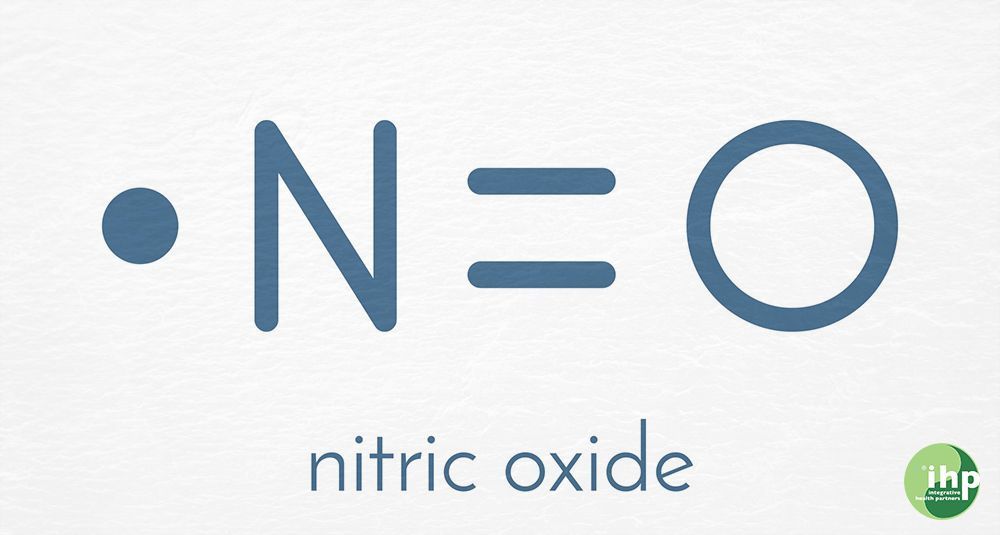Threat Perception and Physical Health: How to Manage the Feedback Loop
Chinese Medicine Perspective on “Stress”
 Liver depression qi stagnation, also known as “liver qi stagnation,” is a fundamental concept in Chinese medicine. It is often used to describe an adverse pattern where the Liver’s function of ensuring the smooth flow of “Qi” throughout the body is obstructed, resulting in various physical and emotional symptoms, including irritability, mood swings, hypochondriac pain, and digestive disturbances.
Liver depression qi stagnation, also known as “liver qi stagnation,” is a fundamental concept in Chinese medicine. It is often used to describe an adverse pattern where the Liver’s function of ensuring the smooth flow of “Qi” throughout the body is obstructed, resulting in various physical and emotional symptoms, including irritability, mood swings, hypochondriac pain, and digestive disturbances.
Biomedical Perspective on Liver Depression Qi Stagnation
From a biomedical standpoint, liver depression qi stagnation can be associated with the body’s stress response, particularly involving the autonomic nervous system, the hypothalamic-pituitary-adrenal (HPA) axis, and the threat surveillance mechanism.
- Autonomic Nervous System and Stress Response
- Sympathetic Nervous System Activation : The sympathetic branch of the autonomic nervous system is responsible for the “fight or flight” response. When the body perceives a threat, the sympathetic nervous system is activated, leading to increased heart rate, blood pressure, and energy mobilization. Chronic activation of this system can result in what might be described in Chinese medicine as “qi stagnation,” where there is a lack of smooth, harmonious movement of energy (or physiological processes) in the body.
- Parasympathetic Nervous System and Relaxation : The parasympathetic nervous system promotes “rest and digest” functions, helping the body to calm down and restore balance. Liver qi stagnation could be seen as a failure to adequately shift between these two states, resulting in prolonged tension and impaired digestion or emotional processing.
- Hypothalamic-Pituitary-Adrenal (HPA) Axis
- Stress Hormones : The HPA axis controls the release of cortisol, the primary stress hormone. Cortisol plays a critical role in the body’s ability to handle stress. In a state of chronic stress, where the body constantly perceives threats (whether real or perceived), cortisol levels may become dysregulated. This dysregulation can contribute to symptoms akin to liver qi stagnation, such as anxiety, depression, and digestive issues.
- Inflammatory Responses : Chronic activation of the HPA axis can also lead to low-grade inflammation, which might manifest as muscle tension, headaches, or other pain syndromes, paralleling the physical discomforts associated with liver qi stagnation.
- Threat Surveillance Mechanism
- Amygdala and Perception of Threat : The amygdala, a part of the brain involved in emotional processing, plays a crucial role in the threat surveillance mechanism. It is responsible for detecting potential dangers and triggering the body’s stress response. In individuals with liver qi stagnation, there may be an overactive amygdala, leading to heightened sensitivity to stressors and an inability to let go of tension.
- Vigilance and Anxiety : In a state of liver qi stagnation, the body’s vigilance is heightened, akin to a persistent “on guard” state. This constant vigilance can be linked to anxiety disorders, where the body remains in a state of alertness even in the absence of immediate threats, mirroring the emotional symptoms of liver depression.
- Digestive and Metabolic Implications
- Gut-Brain Axis : The gut-brain axis is a bidirectional communication system between the gastrointestinal tract and the brain. Stress and emotional disturbances can disrupt this communication, leading to symptoms like bloating, constipation, or diarrhea, which are commonly seen in liver qi stagnation. The neurotransmitters involved in this axis, such as serotonin, also play a role in mood regulation.
- Digestive Enzyme Secretion : Chronic stress can impair the secretion of digestive enzymes and bile, leading to digestive inefficiency. This correlates with the traditional Chinese medicine understanding that liver qi stagnation can impede the flow of bile, resulting in digestive discomfort and other related symptoms.
Role of the Amygdala in the Threat Surveillance System
The amygdala plays a central role in the brain’s threat surveillance system, acting as an early warning detector for potential danger. It processes emotional responses, particularly fear and anxiety, and triggers the body’s stress response through activation of the autonomic nervous system and the hypothalamic-pituitary-adrenal (HPA) axis.
- Detection and Processing of Threats
:
- The amygdala is responsible for quickly evaluating sensory information for potential threats. This evaluation happens rapidly, often before conscious awareness, allowing the body to react swiftly to dangers.
- When the amygdala detects a threat, it sends signals to the hypothalamus, initiating the “fight or flight” response. This includes the release of stress hormones like adrenaline and cortisol, preparing the body to either confront or flee from the perceived threat.
- Memory and Learning
:
- The amygdala is also involved in the formation and storage of emotional memories. Experiences that are perceived as threatening are often stored as strong memories, making it easier for the amygdala to recognize similar threats in the future.
- In individuals with a hyperactive threat assessment function, the amygdala may become overly sensitive, reacting to stimuli that are not truly dangerous, which can lead to chronic anxiety, hypervigilance, and difficulty relaxing.
- Regulation by the Prefrontal Cortex
:
- The prefrontal cortex, responsible for higher cognitive functions, plays a role in regulating the amygdala’s activity. It helps assess whether a perceived threat is real and modulates the amygdala’s response accordingly.
- In cases of chronic stress or trauma, the connection between the prefrontal cortex and the amygdala may weaken, leading to a reduced ability to regulate fear and anxiety responses effectively.
Herbal Therapies to Lower Amygdala Sensitivity
Herbal therapies can be an effective way to modulate the activity of the amygdala and the overall stress response. These herbs typically work by influencing neurotransmitter levels, supporting adrenal function, or calming the nervous system.
- Adaptogens
:
- Ashwagandha (Withania somnifera) : Ashwagandha is a well-known adaptogen that helps modulate the stress response by reducing cortisol levels and enhancing the resilience of the nervous system. It has been shown to reduce anxiety and improve stress tolerance, making it useful for individuals with an overactive amygdala.
- Rhodiola (Rhodiola rosea) : Rhodiola is another adaptogen that helps the body adapt to stress. It has been found to reduce anxiety, fatigue, and cognitive impairment caused by stress, helping to lower the sensitivity of the amygdala to perceived threats.
- Nervines
:
- Passionflower (Passiflora incarnata) : Passionflower is a calming herb that can help reduce anxiety by enhancing the effects of gamma-aminobutyric acid (GABA), a neurotransmitter that inhibits nerve transmission in the brain, leading to a calming effect. By reducing anxiety, passionflower can help decrease amygdala reactivity.
- Skullcap (Scutellaria lateriflora) : Skullcap is another nervine herb that has a calming effect on the nervous system. It is particularly useful for individuals who experience nervous tension and anxiety, helping to reduce the overall reactivity of the amygdala.
- Chinese Herbal Formulas
:
- Suan Zao Ren Tang (Sour Jujube Decoction) : This traditional Chinese formula is commonly used for treating insomnia and anxiety. It nourishes the Heart and Liver, calms the spirit, and helps regulate the body’s response to stress. It can be particularly helpful for individuals with an overactive amygdala who struggle with sleep disturbances and anxiety.
- Xiao Yao San (Free and Easy Wanderer) : Xiao Yao San is a classic formula for liver qi stagnation and associated emotional symptoms. By soothing the Liver and harmonizing the Spleen, it helps alleviate tension, irritability, and mood swings, thus indirectly reducing amygdala hyperactivity.
- GABAergic Herbs
:
- Valerian (Valeriana officinalis) : Valerian is known for its sedative and anxiolytic effects, primarily through its action on GABA receptors. By enhancing GABAergic activity, valerian helps reduce anxiety and promotes relaxation, thereby lowering the sensitivity of the amygdala.
- Kava (Piper methysticum) : Kava is another herb that acts on GABA receptors, providing a calming effect without impairing cognitive function. It is particularly effective for reducing anxiety and tension, which can help an individual with a hyperactive threat surveillance system relax.
Incorporating Herbal Therapies with Mindful Awareness Techniques
Herbal therapies can provide the physiological foundation needed to reduce the hyperactivity of the amygdala, allowing individuals to engage more effectively in mindful awareness practices such as meditation, deep breathing, or progressive muscle relaxation. These techniques further enhance the regulation of the amygdala by strengthening the prefrontal cortex’s control over the stress response, promoting a state of calm and balance.
By reducing the sensitivity of the amygdala through herbal therapies, individuals with a hyperactive threat assessment function can achieve a state of relaxation that enables them to more effectively practice mindful awareness techniques. This combined approach offers a holistic way to manage chronic anxiety and stress, addressing both the physiological and psychological aspects of the condition.
Conclusion
In summary, the concept of liver depression qi stagnation in Chinese medicine can be understood in biomedical terms as a state of chronic stress, involving dysregulation of the autonomic nervous system, HPA axis, and threat surveillance mechanisms. This dysregulation leads to a range of symptoms that manifest both physically and emotionally, reflecting the body’s impaired ability to manage stress and maintain homeostasis. Understanding this connection helps bridge the gap between traditional Chinese medicine and modern biomedical perspectives, offering a more comprehensive approach to diagnosing and treating conditions related to stress and emotional health.






